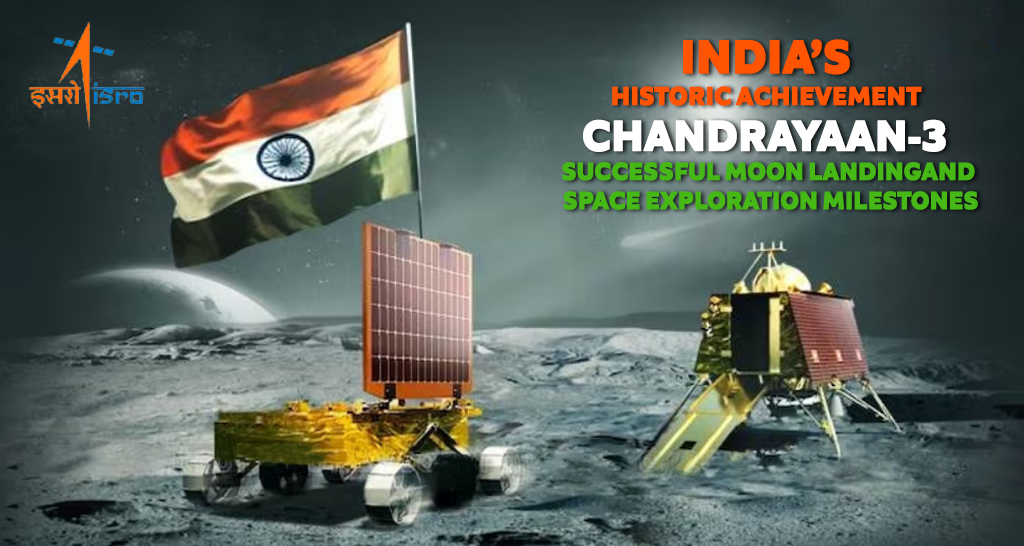In a big accomplishment, India’s space agency ISRO successfully landed a robotic spacecraft, Chandrayaan-3, on the Moon. This is a major achievement for the Indian Space Research Organisation (ISRO) and shows India’s strength in space technology. With this success, India joins a small group of countries – the United States, China, and the former Soviet Union – who have managed to land a working spacecraft on the Moon.
The main goals of the Chandrayaan-3 mission were to learn more about the Moon. Scientists wanted to understand its surface, what it’s made of, its movements, and how hot or cold it gets. They sent a special machine to the Moon with many instruments. One instrument called Radio Anatomy of Moon Bound Hypersensitive Ionosphere and Atmosphere (RAMBHA) would look at the stuff on the Moon’s surface and how it interacts with space particles. Another instrument called Chandra’s Surface Thermo Physical Experiment (ChaSTE) would study how hot or cold the Moon’s surface is in the polar areas. The Instrument for Lunar Seismic Activity (ILSA) would study lunar quakes near the landing site and the Moon’s crust and mantle composition. The LASER Retroreflector Array (LRA) is a passive experiment to study future missions. The LIBS (Laser-Induced Breakdown Spectroscope) technology is designed to analyze the chemical and mineral makeup of the lunar surface. The APXS (Alpha Particle X-ray Spectrometer) instrument aims to ascertain the lunar surface’s chemical and mineralogical composition.
One really exciting aspect of the mission was where it landed. The Chandrayaan-3 spacecraft touched down at a place on the Moon far down south, almost 70 degrees from the equator. No other spacecraft has ever landed this close to the Moon’s south pole. This amazing achievement shows that the people at ISRO had big plans and worked hard to make it happen.
Before this successful landing, another try could have gone better. But this time, Chandrayaan-3 managed to land successfully. This shows how strong and determined the people at ISRO are. Even when things don’t work out, they don’t give up. They learn from their mistakes and keep trying. Other countries that explore space have also faced problems, but ISRO’s ability to bounce back and do even better in just four years shows how tough and persistent they are.
In the last sixty years, only half of the missions to explore the Moon have been successful. The Moon’s surface is tough to explore. But Chandrayaan-3 managed to succeed, which is different from what usually happens. This shows that India is good at space and can do well even in tough conditions. The Moon stands out due to its low gravity, uneven terrain, and abundant dusty particles that can harm machinery. This makes it hard for many missions to work properly.
Chandrayaan-3 landed carefully on the Moon. It followed a curving path from high up to about 4.5 miles above the surface. It slowed down from a fast speed of 3,758 miles to 800 miles per hour. It paused for 10 seconds to adjust its position. The spacecraft shared pictures as it came down and landed precisely around 8:33 a.m.
The achievement of Chandrayaan-3 means a lot for India, not just in space but in other areas too. It shows that India is becoming globally important. Just like when India did nuclear tests that had an impact beyond just the military, this success shows that India is good at doing complex things with technology.
India’s successful landing of Chandrayaan-3 on the Moon is a big achievement for the country in space exploration. This shows that India is now a leader in space stuff and is good at using technology to do amazing things. It also proves India is determined, good with technology, and always trying to do even better things.






